
Progress 0%
Ridding the world of unnecessary packaging: Nohbo with Benjamin Stern
World's first land-based coral farm: Coral Vita with Sam Teicher
Climate-resilient agriculture: The Cacao Project with Louise Mabulo
Cleaning up floating ocean plastics: The Ocean CleanUp with Boyan Slat
Eliminating the idea of waste: TerraCycle with Tom Szaky
A circular model for second-hand clothing: FabricAID with Omar Itani
Planting trees, one goal at a time: Trees4Goals with Lesein Mutunkei
Exchanging waste for plants: Eco Star with Fatemah Alzelzela
Innovative technology to reduce rice waste: Rice Inc with Kisum Chan
Do you have questions?
Ask The Earth Prize Mentors!
Key Concepts
Holocene
Anthropocene
The Great
Acceleration
Positive
Feedback Loop
Cascading
Tipping Points
Ecological
Imbalance
Global
Warming
Climate Change
Holocene
Anthropocene
The Great
Acceleration
Positive
Feedback Loop
Cascading
Tipping Points
Ecological
Imbalance
Global
Warming
Climate Change
Holocene
Anthropocene
The Great
Acceleration
Positive
Feedback Loop
Cascading
Tipping Points
Ecological
Imbalance
Global
Warming
Climate Change
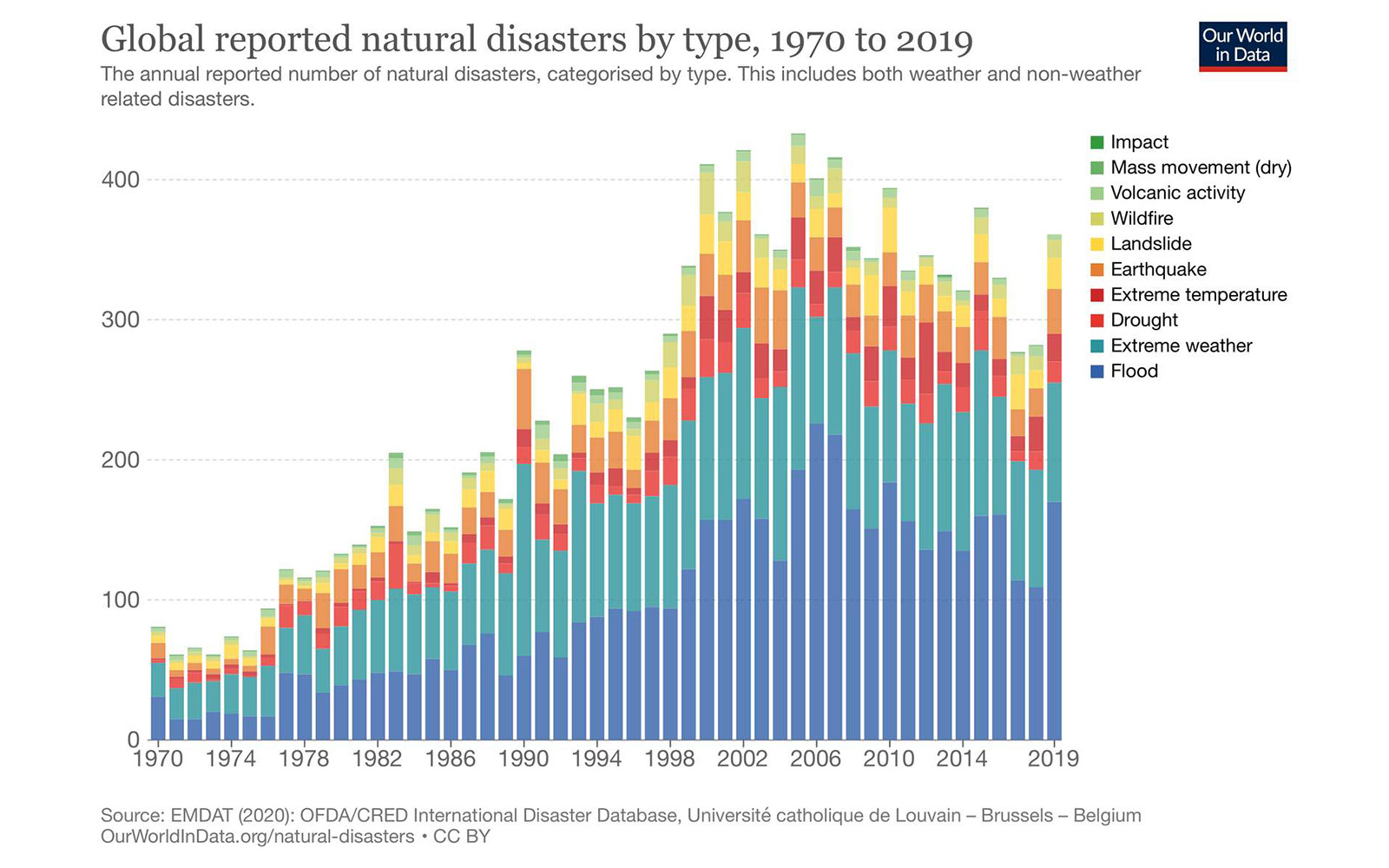
Climate Change
Climate change is a long-term change in the average weather patterns that have come to define Earth’s local, regional and global climates. Global climate is projected to continue to change over this century and beyond. The magnitude of climate change beyond the next few decades depends primarily on the amount of heat-trapping gases emitted globally, and how sensitive the Earth’s climate is to those emissions. (NASA)
Check out the interactive version of the graph below here.
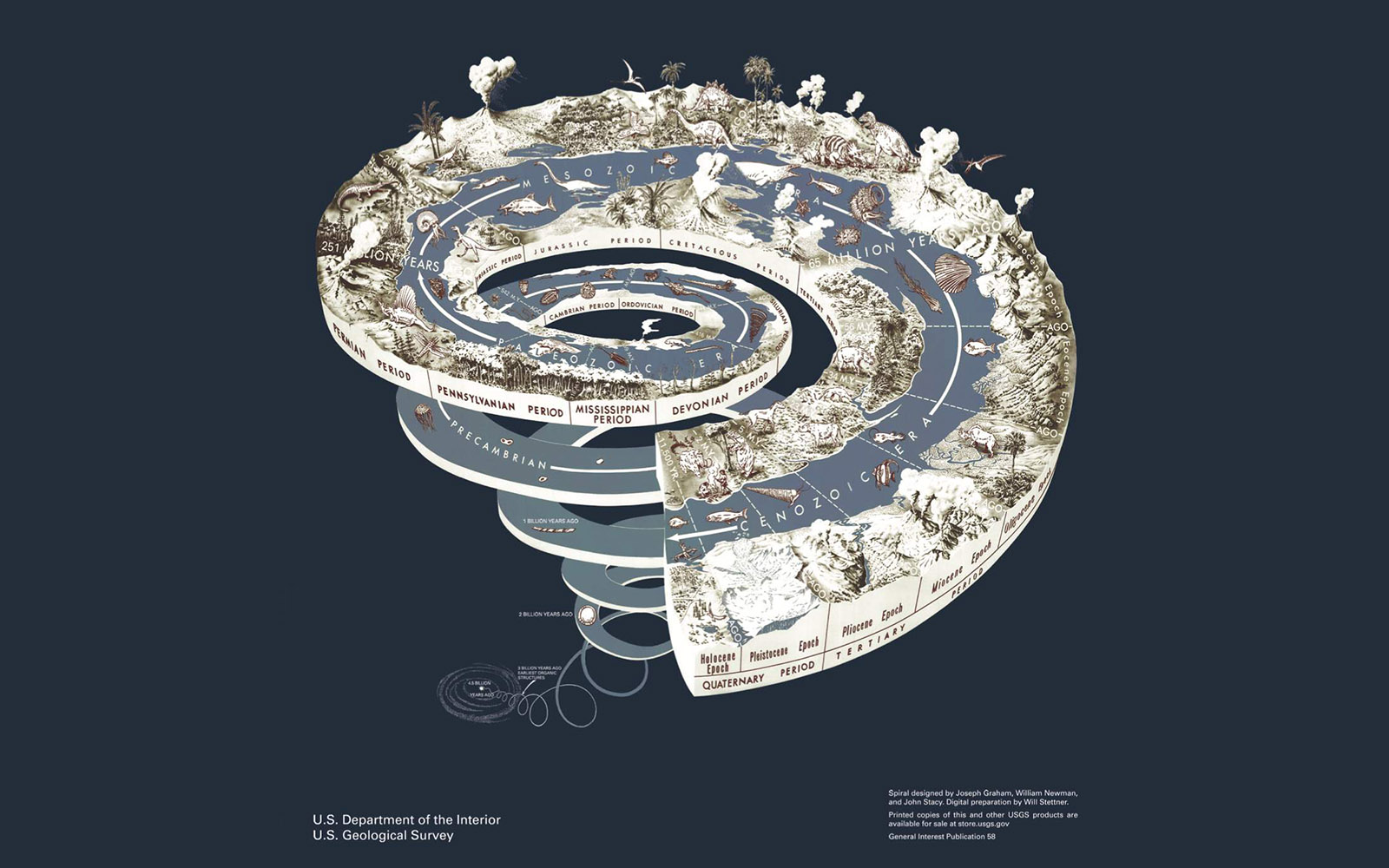
Holocene
The current period of geologic time. The name comes from the two Ancient Greek words Holos (“whole”) and Kainos (where “cene” comes from, meaning “new”), roughly translated as ‘entirely recent’. It is the second epoch of the Quaternary period, which began approximately 11,650 years ago with the end of the Paleolithic Ice Age. The Holocene also coincides with the effects of modern humans on planet Earth, and it includes the agricultural revolution and every known major civilization in human history. (Live Science)

Anthropocene
A newly-proposed unit of geologic time, used to describe the most recent geologic epoch in Earth’s history, when human activity started to have a significant impact on Earth and its natural systems. The name comes from the Greek Anthropo- for “man,” and -cene, for “new”, and it has been championed by many scientists as a more accurate alternative to Holocene.
You can read more about the Anthropocene-Holocene debate here.
Photo source: Robyn Woolston / Edge Hill University
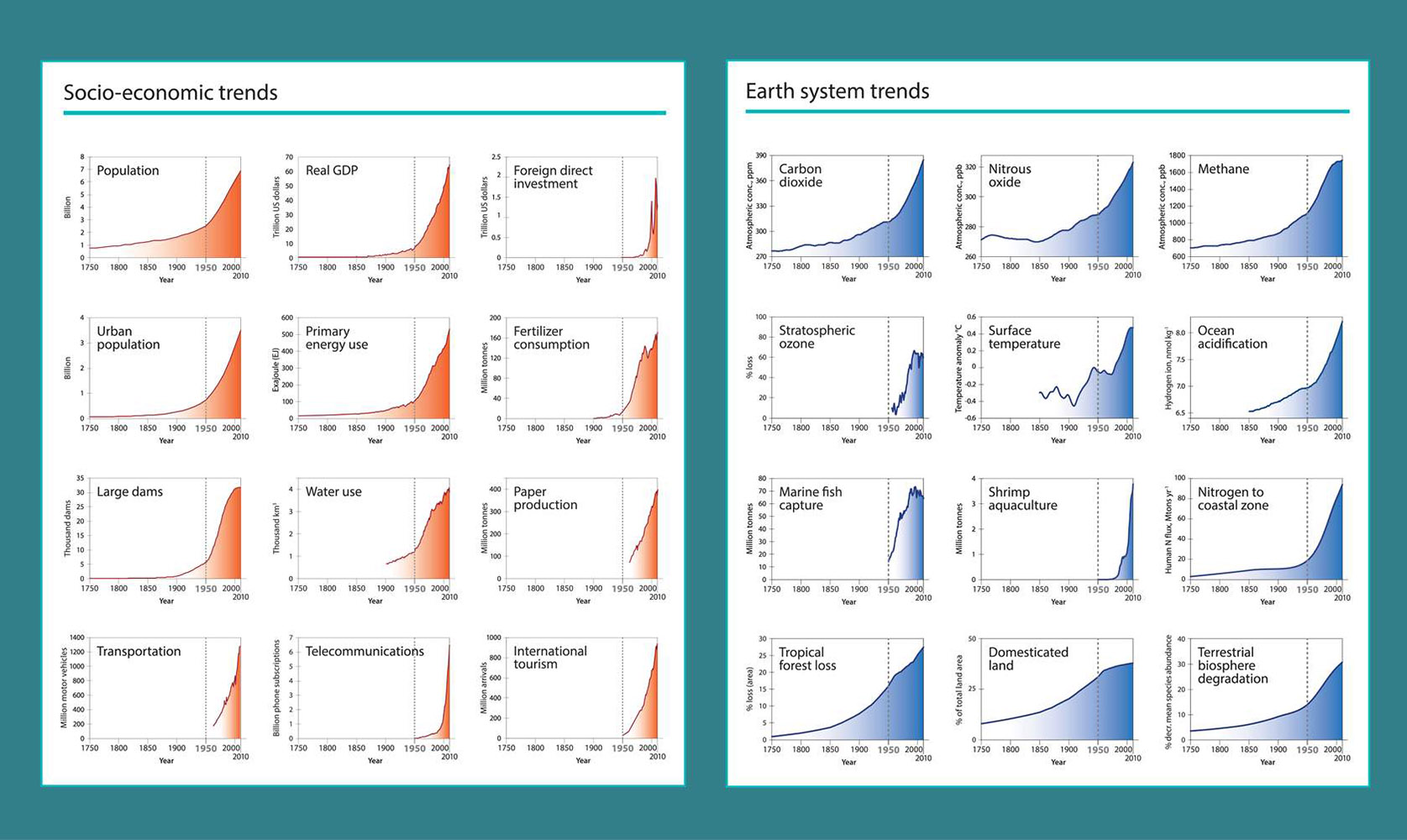
The Great
Acceleration
The dramatic, continuous and roughly simultaneous surge in growth rates across a large range of measures of human activity, first recorded in the mid-20th century and continuing to this day. A few examples of this include:
Human population: in the last 50 years, the human population has more than doubled. (1)
Plastic production: Since the 1950s, 8.3 billion metric tonnes of plastics have been produced, and half of that amount was produced in the past 15 years alone. (2)
CO2 emissions: More than half of all CO2 emissions emitted to the atmosphere since 1751 were emitted in the last 30 years. (3)
You can read more on The Great Acceleration here.
Photo source: Steffen et al. (2015) The trajectory of the Anthropocene: the great acceleration. Anthropocene Review, Vol. 2: 1, pp. 81-98
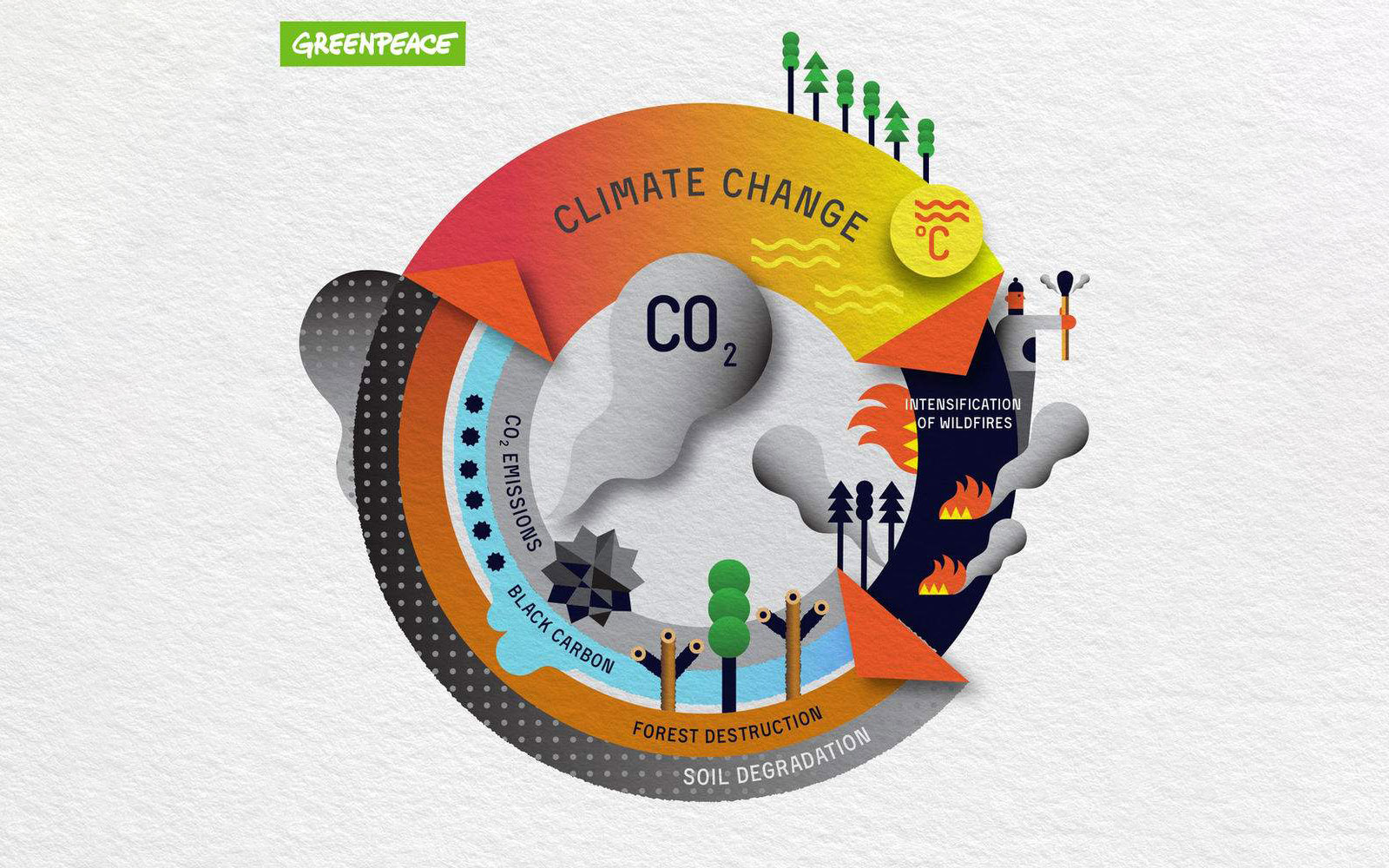
Positive
Feedback Loop
A process in which the results of an action cause more of that action to occur, amplifying the original action. (Biologydictionary.net)
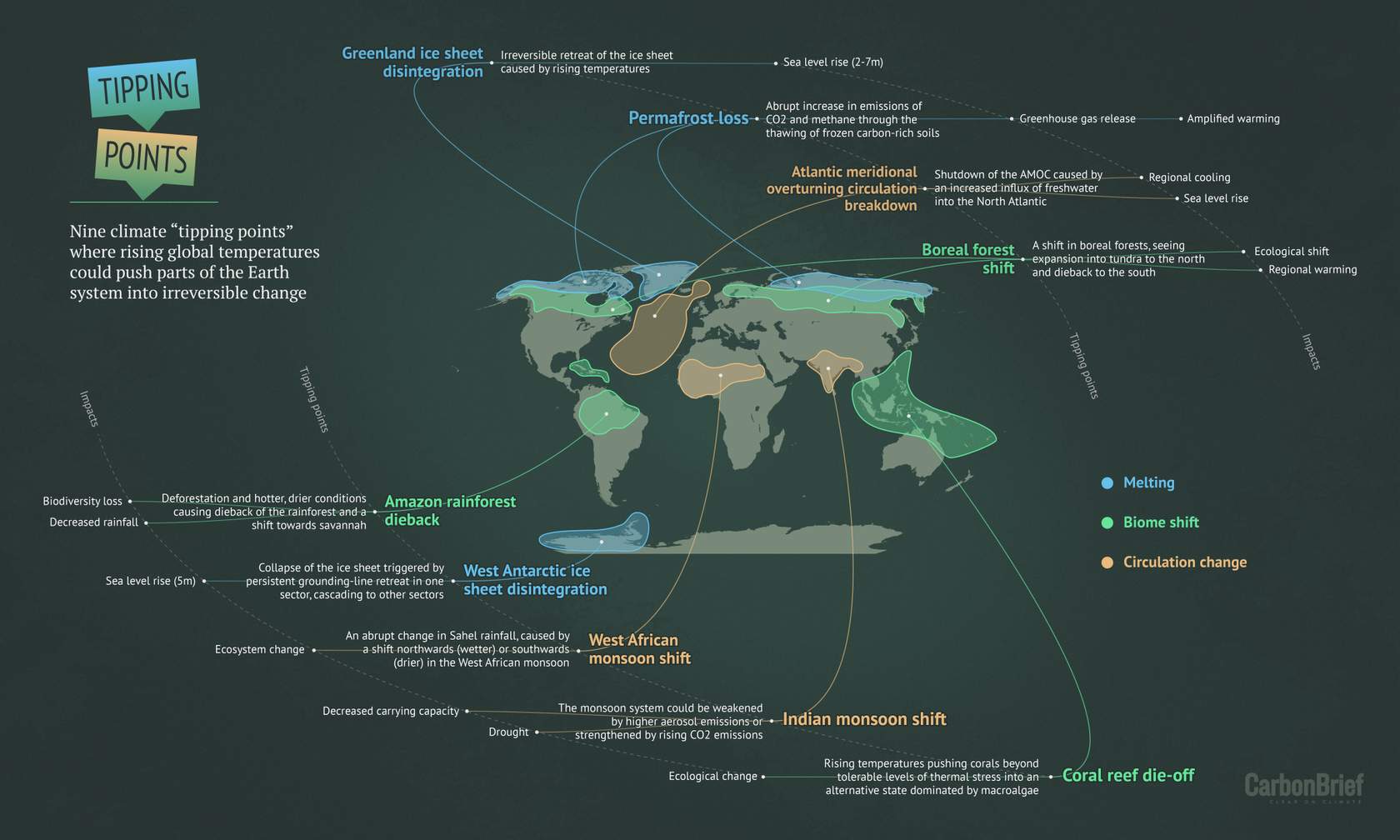
Cascading
Tipping Points
Points at which an ecosystem can no longer cope with environmental change, and the ecosystem suddenly shifts from one state to another. When these thresholds are exceeded, they can lead to large changes in the state of the system.
Climate Tipping Points are caused when the increase in global temperature creates changes that are unstoppable or irreversible, such as the disintegration of the Greenland ice sheet, permafrost loss, and coral reef die-off. (Earth.org)
Nine climate tipping points have been identified (CarbonBrief):
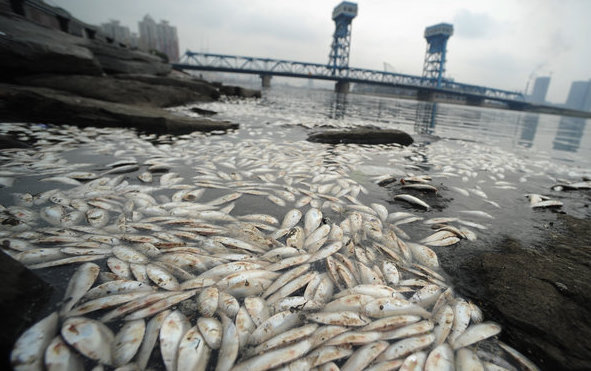
Ecological
Imbalance
When a natural or human-caused disturbance disrupts the natural balance of an ecosystem. Examples of this include the case of the wolves being hunted and killed at Yellowstone National Park, the rapid deforestation of Sumatra’s rainforests due to oil palm cultivation, or the overfishing of Albacore tuna.
Photo source: CFP
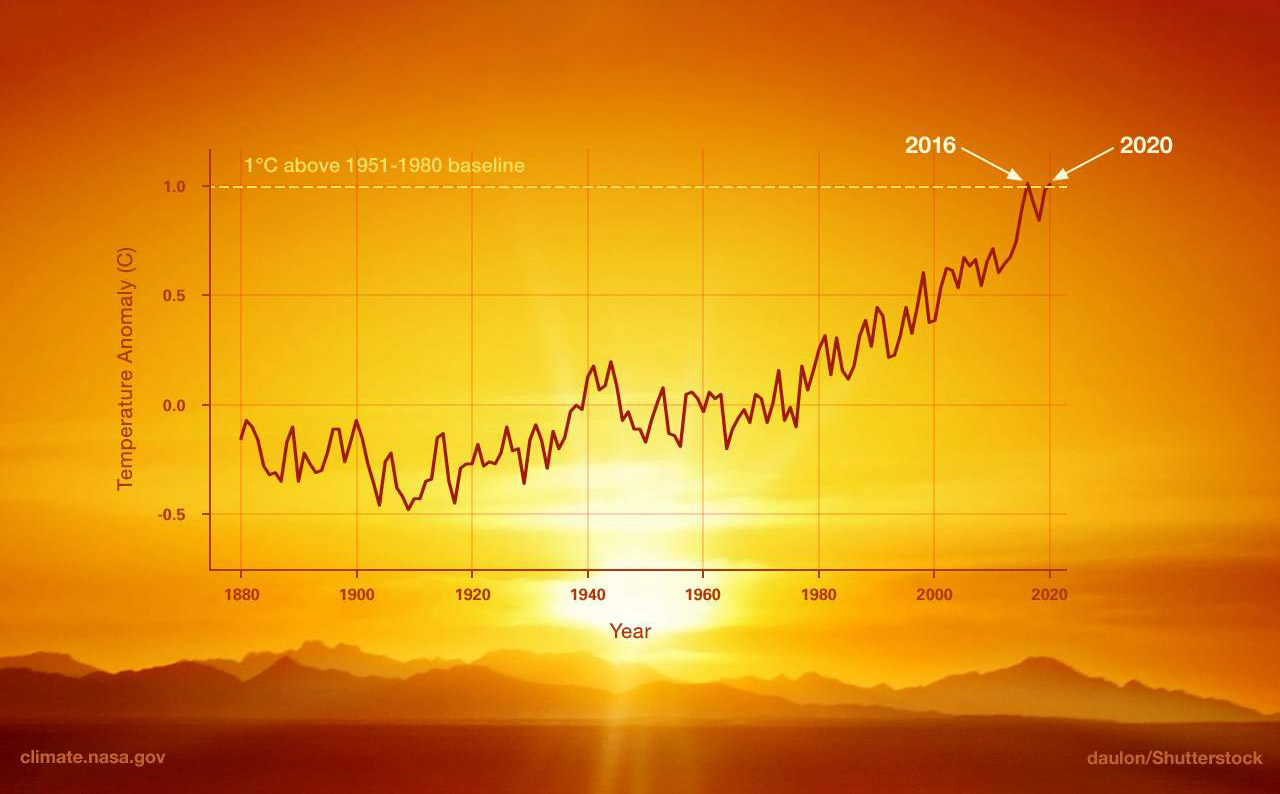
Global
Warming
The long-term heating of Earth’s climate system observed since the pre-industrial period (between 1850 and 1900) due to human activities, primarily fossil fuel burning, which increases heat-trapping greenhouse gas levels in Earth’s atmosphere. (NASA)

Climate Change
Climate change is a long-term change in the average weather patterns that have come to define Earth’s local, regional and global climates. Global climate is projected to continue to change over this century and beyond. The magnitude of climate change beyond the next few decades depends primarily on the amount of heat-trapping gases emitted globally, and how sensitive the Earth’s climate is to those emissions. (NASA)
Check out the interactive version of the graph below here.

Holocene
The current period of geologic time. The name comes from the two Ancient Greek words Holos (“whole”) and Kainos (where “cene” comes from, meaning “new”), roughly translated as ‘entirely recent’. It is the second epoch of the Quaternary period, which began approximately 11,650 years ago with the end of the Paleolithic Ice Age. The Holocene also coincides with the effects of modern humans on planet Earth, and it includes the agricultural revolution and every known major civilization in human history. (Live Science)

Anthropocene
A newly-proposed unit of geologic time, used to describe the most recent geologic epoch in Earth’s history, when human activity started to have a significant impact on Earth and its natural systems. The name comes from the Greek Anthropo- for “man,” and -cene, for “new”, and it has been championed by many scientists as a more accurate alternative to Holocene.
You can read more about the Anthropocene-Holocene debate here.
Photo source: Robyn Woolston / Edge Hill University

The Great
Acceleration
The dramatic, continuous and roughly simultaneous surge in growth rates across a large range of measures of human activity, first recorded in the mid-20th century and continuing to this day. A few examples of this include:
Human population: in the last 50 years, the human population has more than doubled. (1)
Plastic production: Since the 1950s, 8.3 billion metric tonnes of plastics have been produced, and half of that amount was produced in the past 15 years alone. (2)
CO2 emissions: More than half of all CO2 emissions emitted to the atmosphere since 1751 were emitted in the last 30 years. (3)
You can read more on The Great Acceleration here.
Photo source: Steffen et al. (2015) The trajectory of the Anthropocene: the great acceleration. Anthropocene Review, Vol. 2: 1, pp. 81-98

Positive
Feedback Loop
A process in which the results of an action cause more of that action to occur, amplifying the original action. (Biologydictionary.net)

Cascading
Tipping Points
Points at which an ecosystem can no longer cope with environmental change, and the ecosystem suddenly shifts from one state to another. When these thresholds are exceeded, they can lead to large changes in the state of the system.
Climate Tipping Points are caused when the increase in global temperature creates changes that are unstoppable or irreversible, such as the disintegration of the Greenland ice sheet, permafrost loss, and coral reef die-off. (Earth.org)
Nine climate tipping points have been identified (CarbonBrief):

Ecological
Imbalance
When a natural or human-caused disturbance disrupts the natural balance of an ecosystem. Examples of this include the case of the wolves being hunted and killed at Yellowstone National Park, the rapid deforestation of Sumatra’s rainforests due to oil palm cultivation, or the overfishing of Albacore tuna.
Photo source: CFP

Global
Warming
The long-term heating of Earth’s climate system observed since the pre-industrial period (between 1850 and 1900) due to human activities, primarily fossil fuel burning, which increases heat-trapping greenhouse gas levels in Earth’s atmosphere. (NASA)

Climate Change
Climate change is a long-term change in the average weather patterns that have come to define Earth’s local, regional and global climates. Global climate is projected to continue to change over this century and beyond. The magnitude of climate change beyond the next few decades depends primarily on the amount of heat-trapping gases emitted globally, and how sensitive the Earth’s climate is to those emissions. (NASA)
Check out the interactive version of the graph below here.

Biodiversity Loss
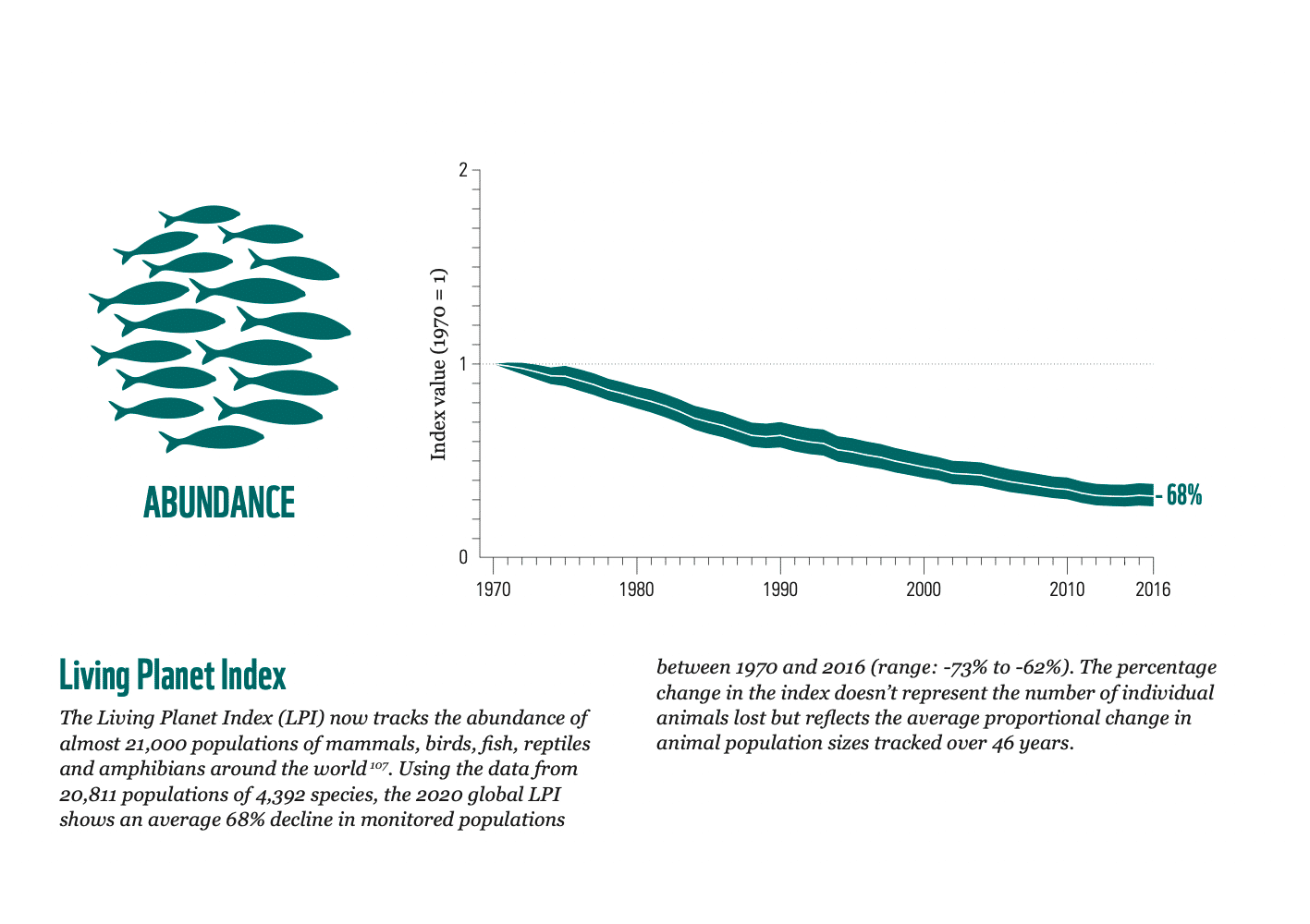
Biodiversity refers to the variety of living species that can be found in a particular place (region, ecosystem, planet...). Our world’s rich biodiversity is one of the most important assets of our planet and a crucial element to preserving life on Earth. However, many species are directly or indirectly threatened due to human activities (14). Increasing human consumption and population growth not only disrupt but also destroy ecosystems. The biggest threats to biodiversity include deforestation and land-use changes, the overexploitation of species, climate change, pollution, and the introduction of invasive species. (Earth.org)
These actions have led to the widespread destruction of habitats as well as the death of millions of animals and plants. Species live together and depend on one another. This complex network of interdependent relationships means that the loss of one species can trigger unexpected losses at a wider scale. And once a species is completely extinct, it can never be brought back. The loss of biodiversity weakens the world’s ecosystems and puts at risk the very foundation humanity’s survival depends on.
Photo source: WWF, Living Planet Report 2020
How humans created the Anthropocene
Our planet is about 4.5 billion years old, yet modern humans have only existed for around 200,000 years. In the past, humans lived in harmony with nature and then shifted to living off of nature while using more and more of its resources. As we evolved and our societies became more developed, our needs also became more complex and required many more resources. The dawn of industrialization, in particular, marked the beginning of humans’ ability to impact the world on a global scale. Since then, human activity has experienced an unprecedented surge - The Great Acceleration - which has had a drastic impact on our planet. Here, you can explore some of the most significant examples of human impact on the natural world.
Energy Consumption
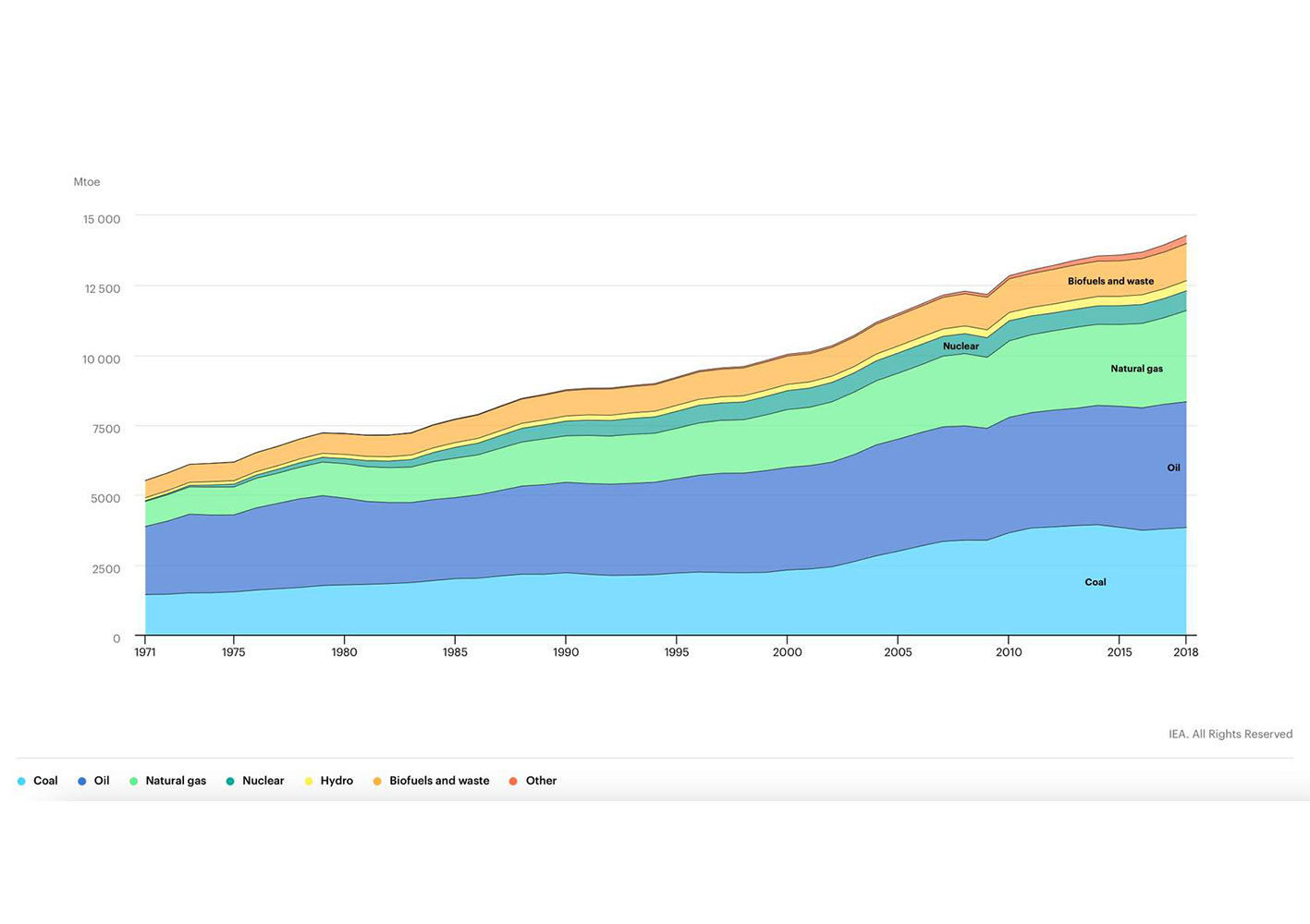
Our ever-increasing demand for energy, as well as our ways of obtaining it, are one of the main drivers behind The Great Acceleration. Energy is essential for most of modern society’s activities. We need energy for electricity, to power our cars and our electronic devices, to heat and cool our homes, to grow food, for transportation, etc. Unfortunately, most of this energy is obtained from nonrenewable resources: about 80% of the total amount of energy used globally each year comes from fossil fuels. (National Geographic)
The problem with the use of fossil fuels for energy production is that, apart from being limited in supply, their combustion process (burning them) releases immense quantities of carbon dioxide into the atmosphere. This is why the production and use of energy from fossil fuels is the single biggest contributor to global warming. (4) The second biggest contributor is agriculture, which you can read about in the next section.
Photo source: International Energy Agency (IEA)
Land use and deforestation
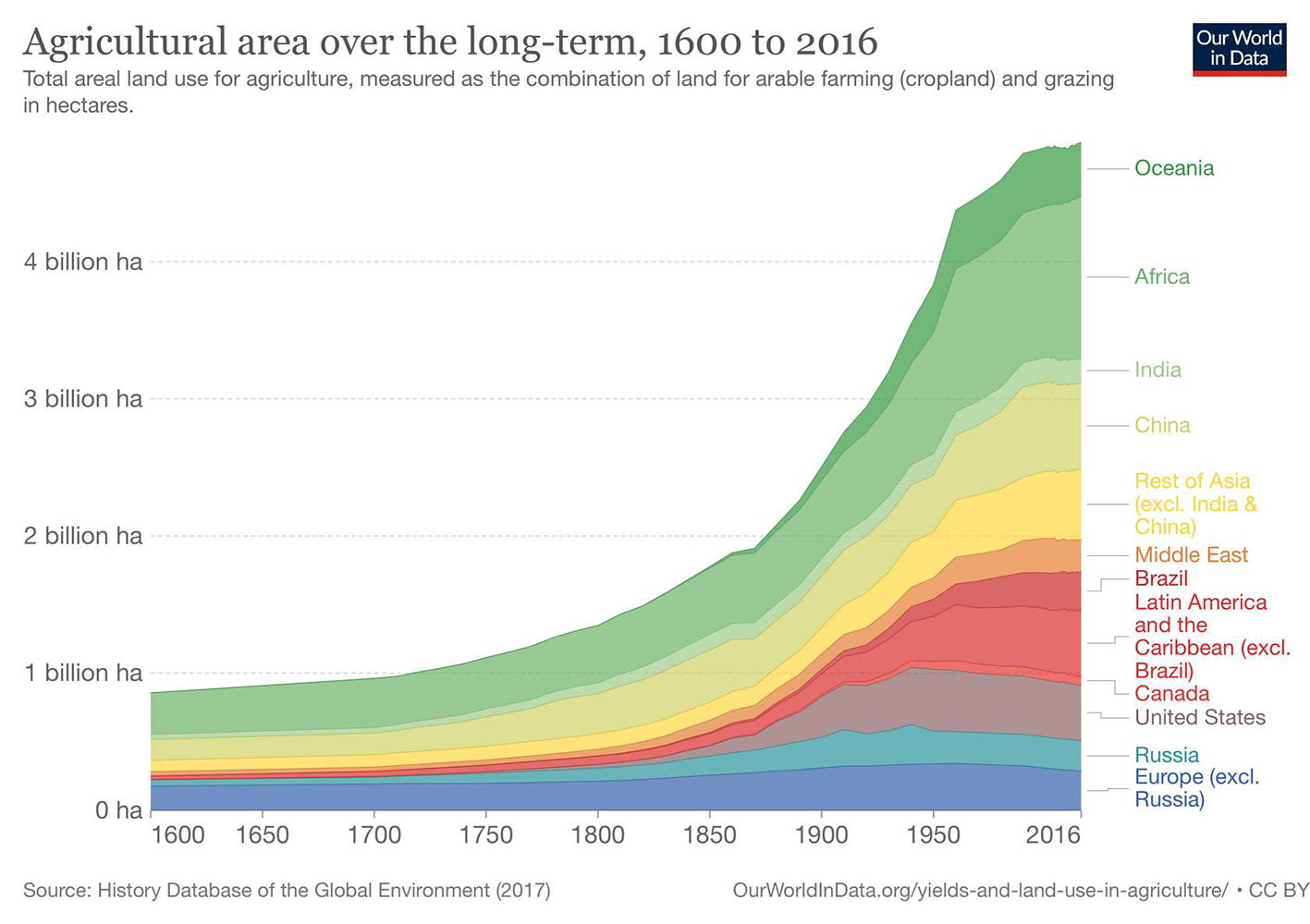
Land is not just an important natural resource for humans, but also a major sink of greenhouse gases (GHGs): soils and vegetation trap a great percentage of global CO2 emissions. The way humans systematically convert wild habitats such as forests, wetlands, mangroves, etc. into agricultural lands for farming and food production has, however, had a profound negative impact on these natural resources. Converted agricultural land extends across around 5 billion hectares globally, which represents 38% of the world’s land surface. (5) One of the main issues associated with this type of land use is deforestation - the clearing of forests for wood production, croplands, and grazelands - which releases back into the atmosphere the carbon dioxide that the vegetation and soil had once captured and stored. Land conversion is also the main cause of many other environmental issues, such as biodiversity loss, soil degradation, changes to the water cycle, desertification, etc.
Read more on land use and deforestation here.
Pollution
Scientists have recently discovered that for the first time ever, human-made materials (buildings, roads, manufactured goods, etc.) outweigh all organic matter on Earth, including plants and animals. Due to our increased consumption of natural resources, the weight of living biomass has decreased by half since the first agricultural revolution at the beginning of the Holocene. (Time) Most of these man-made materials end up back in nature as waste, which, if not disposed of properly, become the main cause of pollution.
Pollution refers to the addition of any substance (solid, liquid, or gas) or any form of energy (such as heat, sound, or radioactivity) to the environment at a rate faster than it can be dispersed, diluted, decomposed, recycled, or stored in a harmless manner. Pollution is everywhere, even if we cannot see it. It is not just the trash people leave behind on the street; it is also the toxic chemicals factories dispose of in our streams, excess light and noise emitted from our cities, and the smog caused by the release of greenhouse gases into the atmosphere.
Pollution greatly disrupts ecosystems around the world - it harms natural habitats and the organisms present in them, increasing biodiversity loss; it leads to the circulation of toxins across the food chain; it increases the amount of GHG present in our atmosphere; and it even directly affects humans. The WHO estimates that 4.2 million human deaths every year are due to air pollution alone. (6)
You can read more about pollution here.
Freshwater Use
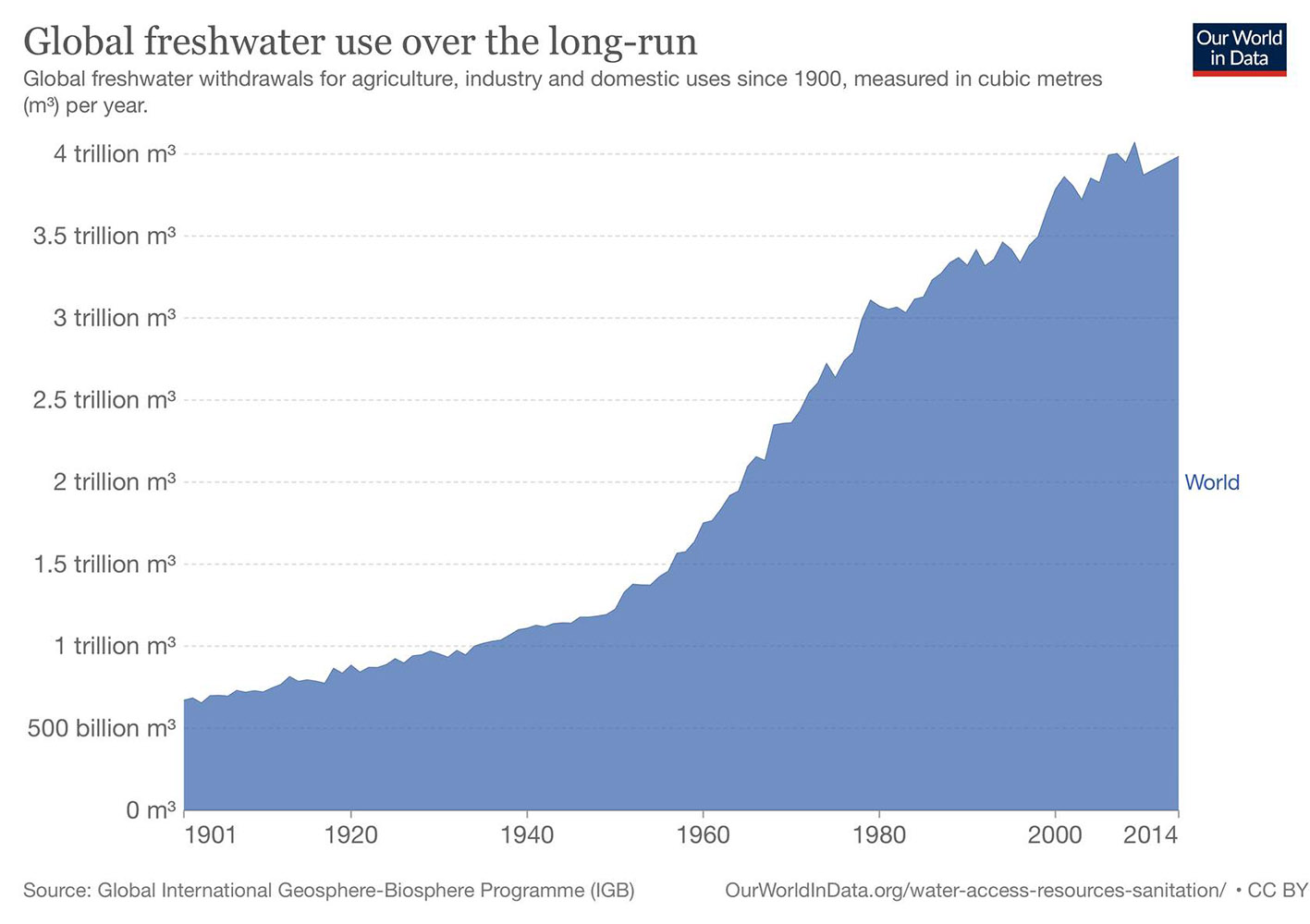
Freshwater is a finite resource. Freshwater habitats include glaciers, lakes, rivers, ponds, reservoirs, wetlands and even groundwater. Saltwater is 97% of all water and is found mostly in the seas and oceans. Although 70% of our world is covered by water, only 3% of it is freshwater, and only one-third of that is accessible to humans. (7) Global access to safe and reliable water is essential for human survival and sustainable progress (8); however, water has become a problematically scarce resource. An estimated 2.3 billion people live in water-stressed regions (20% of the world’s population). Moreover, the increased use of freshwater in some parts of the planet exceeds the natural world’s capability of restoring its supplies. (National Geographic) Human activity is directly linked to the increasingly unsustainable use of freshwater (8):
Greenhouse Gas (GHG) Emissions
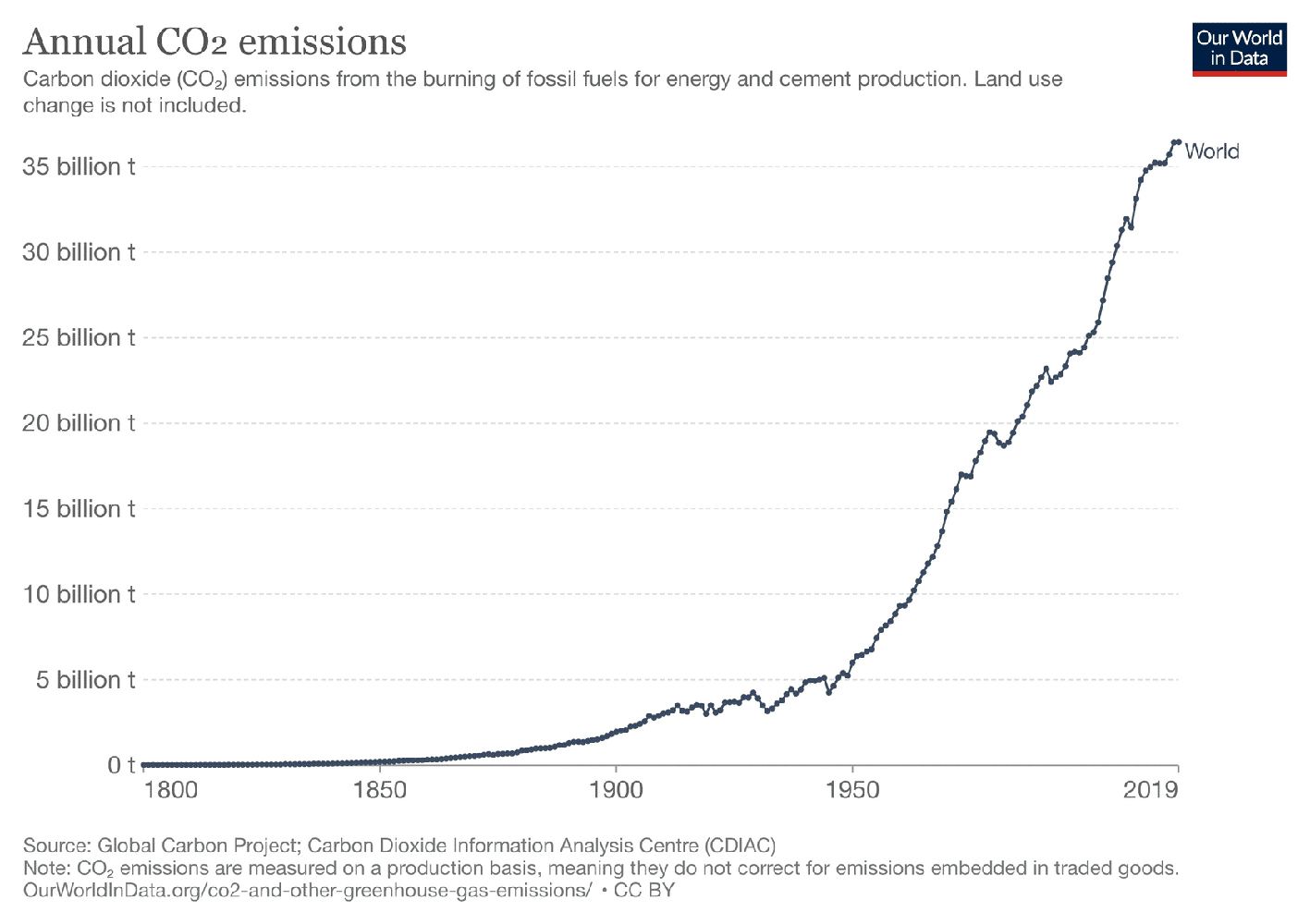
Greenhouse Gases (GHG) are gases that absorb the energy emitted by the sun, allowing less heat to escape back to space, and trapping it in the lower atmosphere. Many greenhouse gases occur naturally in the atmosphere, such as carbon dioxide, methane, water vapor, and nitrous oxide, while others are synthetic. (11) Greenhouse gases are essential to keep the Earth’s temperatures within livable limits. However, in the past century, human activity has caused the release of excessive amounts of greenhouse gases into our planet’s atmosphere.
Increasing carbon dioxide (CO2) emissions from human activities, in particular, are at the root of most of our world’s environmental challenges, including global warming, climate change, ocean acidification, and air pollution. Yet, human-caused CO2 emissions remain today among the highest levels ever seen in history. (12) This exponential increase in emissions has been primarily driven by the rapid industrialization of society and our ever-increasing population growth. Studies show that CO2 emissions in 2011 were 150 times higher than in 1850. (13) Check out the history of your country’s GHG emissions on this interactive graph.
You can read more about Greenhouse Gases here.
Biodiversity Loss

Biodiversity refers to the variety of living species that can be found in a particular place (region, ecosystem, planet...). Our world’s rich biodiversity is one of the most important assets of our planet and a crucial element to preserving life on Earth. However, many species are directly or indirectly threatened due to human activities (14). Increasing human consumption and population growth not only disrupt but also destroy ecosystems. The biggest threats to biodiversity include deforestation and land-use changes, the overexploitation of species, climate change, pollution, and the introduction of invasive species. (Earth.org)
These actions have led to the widespread destruction of habitats as well as the death of millions of animals and plants. Species live together and depend on one another. This complex network of interdependent relationships means that the loss of one species can trigger unexpected losses at a wider scale. And once a species is completely extinct, it can never be brought back. The loss of biodiversity weakens the world’s ecosystems and puts at risk the very foundation humanity’s survival depends on.
Photo source: WWF, Living Planet Report 2020
How humans created the Anthropocene
Our planet is about 4.5 billion years old, yet modern humans have only existed for around 200,000 years. In the past, humans lived in harmony with nature and then shifted to living off of nature while using more and more of its resources. As we evolved and our societies became more developed, our needs also became more complex and required many more resources. The dawn of industrialization, in particular, marked the beginning of humans’ ability to impact the world on a global scale. Since then, human activity has experienced an unprecedented surge - The Great Acceleration - which has had a drastic impact on our planet. Here, you can explore some of the most significant examples of human impact on the natural world.
Energy Consumption

Our ever-increasing demand for energy, as well as our ways of obtaining it, are one of the main drivers behind The Great Acceleration. Energy is essential for most of modern society’s activities. We need energy for electricity, to power our cars and our electronic devices, to heat and cool our homes, to grow food, for transportation, etc. Unfortunately, most of this energy is obtained from nonrenewable resources: about 80% of the total amount of energy used globally each year comes from fossil fuels. (National Geographic)
The problem with the use of fossil fuels for energy production is that, apart from being limited in supply, their combustion process (burning them) releases immense quantities of carbon dioxide into the atmosphere. This is why the production and use of energy from fossil fuels is the single biggest contributor to global warming. (4) The second biggest contributor is agriculture, which you can read about in the next section.
Photo source: International Energy Agency (IEA)
Land use and deforestation

Land is not just an important natural resource for humans, but also a major sink of greenhouse gases (GHGs): soils and vegetation trap a great percentage of global CO2 emissions. The way humans systematically convert wild habitats such as forests, wetlands, mangroves, etc. into agricultural lands for farming and food production has, however, had a profound negative impact on these natural resources. Converted agricultural land extends across around 5 billion hectares globally, which represents 38% of the world’s land surface. (5) One of the main issues associated with this type of land use is deforestation - the clearing of forests for wood production, croplands, and grazelands - which releases back into the atmosphere the carbon dioxide that the vegetation and soil had once captured and stored. Land conversion is also the main cause of many other environmental issues, such as biodiversity loss, soil degradation, changes to the water cycle, desertification, etc.
Read more on land use and deforestation here.
Pollution
Scientists have recently discovered that for the first time ever, human-made materials (buildings, roads, manufactured goods, etc.) outweigh all organic matter on Earth, including plants and animals. Due to our increased consumption of natural resources, the weight of living biomass has decreased by half since the first agricultural revolution at the beginning of the Holocene. (Time) Most of these man-made materials end up back in nature as waste, which, if not disposed of properly, become the main cause of pollution.
Pollution refers to the addition of any substance (solid, liquid, or gas) or any form of energy (such as heat, sound, or radioactivity) to the environment at a rate faster than it can be dispersed, diluted, decomposed, recycled, or stored in a harmless manner. Pollution is everywhere, even if we cannot see it. It is not just the trash people leave behind on the street; it is also the toxic chemicals factories dispose of in our streams, excess light and noise emitted from our cities, and the smog caused by the release of greenhouse gases into the atmosphere.
Pollution greatly disrupts ecosystems around the world - it harms natural habitats and the organisms present in them, increasing biodiversity loss; it leads to the circulation of toxins across the food chain; it increases the amount of GHG present in our atmosphere; and it even directly affects humans. The WHO estimates that 4.2 million human deaths every year are due to air pollution alone. (6)
You can read more about pollution here.
Freshwater Use

Freshwater is a finite resource. Freshwater habitats include glaciers, lakes, rivers, ponds, reservoirs, wetlands and even groundwater. Saltwater is 97% of all water and is found mostly in the seas and oceans. Although 70% of our world is covered by water, only 3% of it is freshwater, and only one-third of that is accessible to humans. (7) Global access to safe and reliable water is essential for human survival and sustainable progress (8); however, water has become a problematically scarce resource. An estimated 2.3 billion people live in water-stressed regions (20% of the world’s population). Moreover, the increased use of freshwater in some parts of the planet exceeds the natural world’s capability of restoring its supplies. (National Geographic) Human activity is directly linked to the increasingly unsustainable use of freshwater (8):
Greenhouse Gas (GHG) Emissions

Greenhouse Gases (GHG) are gases that absorb the energy emitted by the sun, allowing less heat to escape back to space, and trapping it in the lower atmosphere. Many greenhouse gases occur naturally in the atmosphere, such as carbon dioxide, methane, water vapor, and nitrous oxide, while others are synthetic. (11) Greenhouse gases are essential to keep the Earth’s temperatures within livable limits. However, in the past century, human activity has caused the release of excessive amounts of greenhouse gases into our planet’s atmosphere.
Increasing carbon dioxide (CO2) emissions from human activities, in particular, are at the root of most of our world’s environmental challenges, including global warming, climate change, ocean acidification, and air pollution. Yet, human-caused CO2 emissions remain today among the highest levels ever seen in history. (12) This exponential increase in emissions has been primarily driven by the rapid industrialization of society and our ever-increasing population growth. Studies show that CO2 emissions in 2011 were 150 times higher than in 1850. (13) Check out the history of your country’s GHG emissions on this interactive graph.
You can read more about Greenhouse Gases here.
Biodiversity Loss

Biodiversity refers to the variety of living species that can be found in a particular place (region, ecosystem, planet...). Our world’s rich biodiversity is one of the most important assets of our planet and a crucial element to preserving life on Earth. However, many species are directly or indirectly threatened due to human activities (14). Increasing human consumption and population growth not only disrupt but also destroy ecosystems. The biggest threats to biodiversity include deforestation and land-use changes, the overexploitation of species, climate change, pollution, and the introduction of invasive species. (Earth.org)
These actions have led to the widespread destruction of habitats as well as the death of millions of animals and plants. Species live together and depend on one another. This complex network of interdependent relationships means that the loss of one species can trigger unexpected losses at a wider scale. And once a species is completely extinct, it can never be brought back. The loss of biodiversity weakens the world’s ecosystems and puts at risk the very foundation humanity’s survival depends on.
Photo source: WWF, Living Planet Report 2020
Do you have questions?
Ask The Earth Prize Mentors!
THIS WEBSITE USES COOKIES
We use cookies to provide you with the best possible experience. They also allow us to analyze user behavior in order to constantly improve the website for you. You can read more about our Cookie Policy and Privacy Policy.

